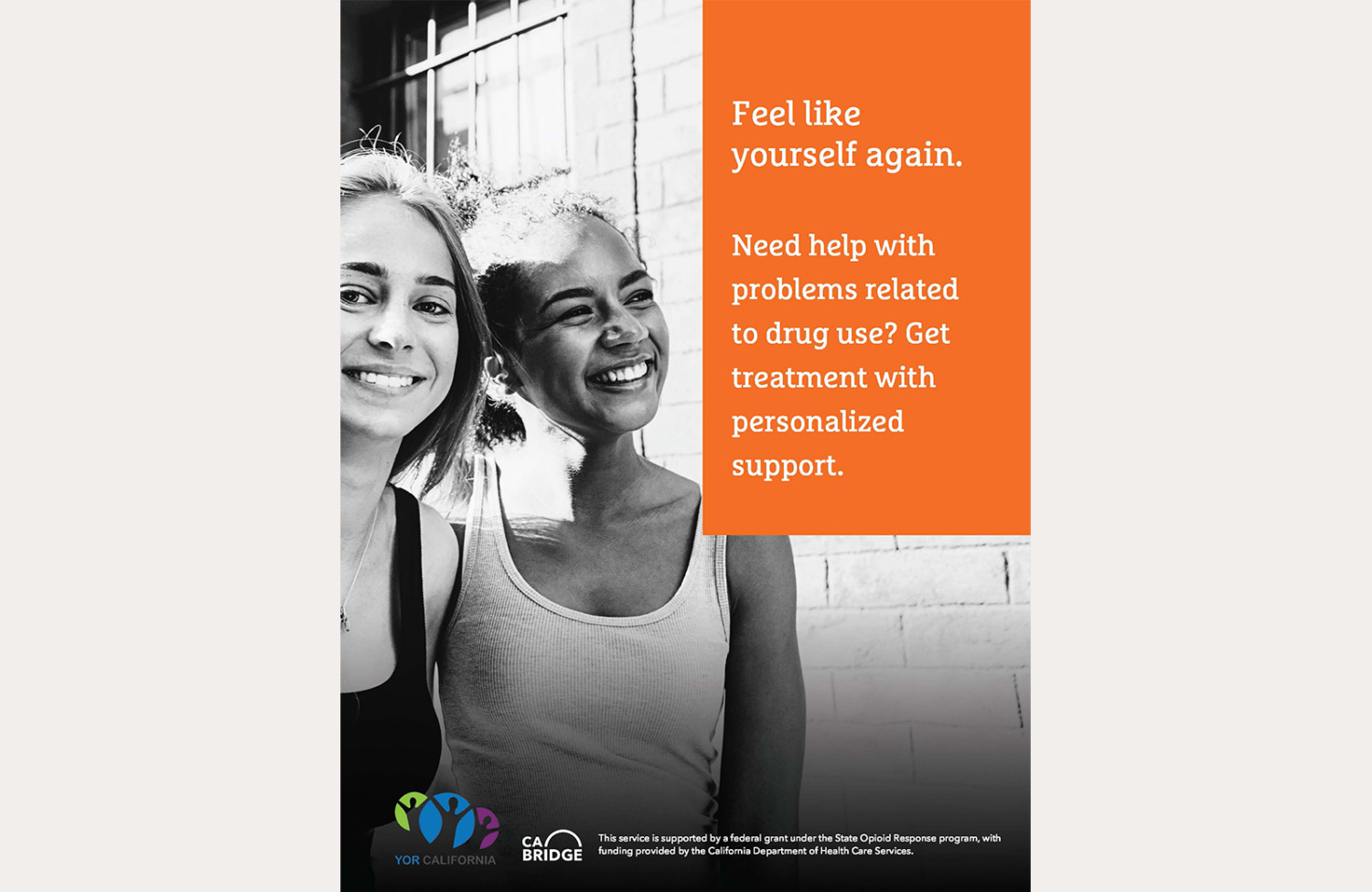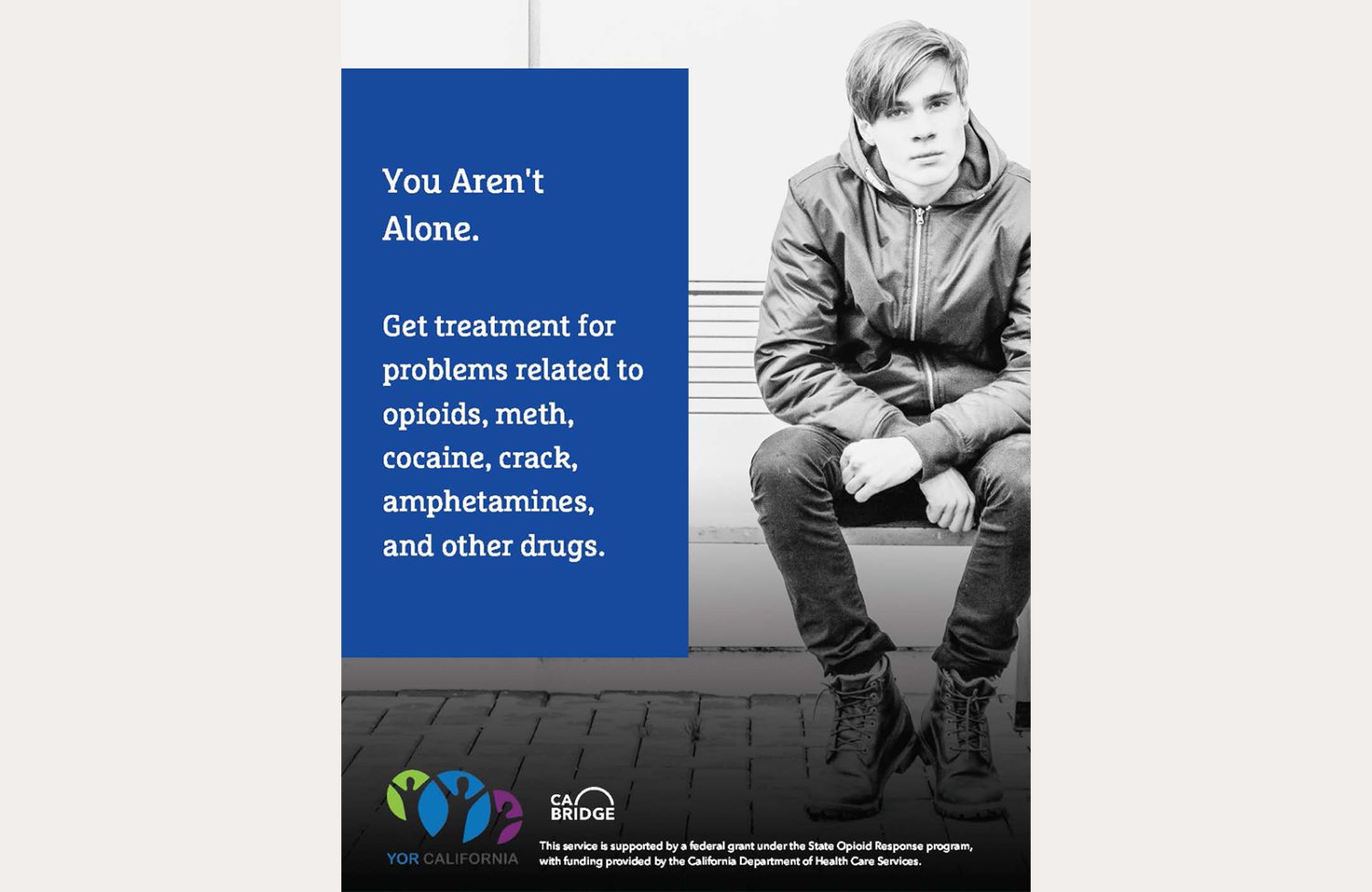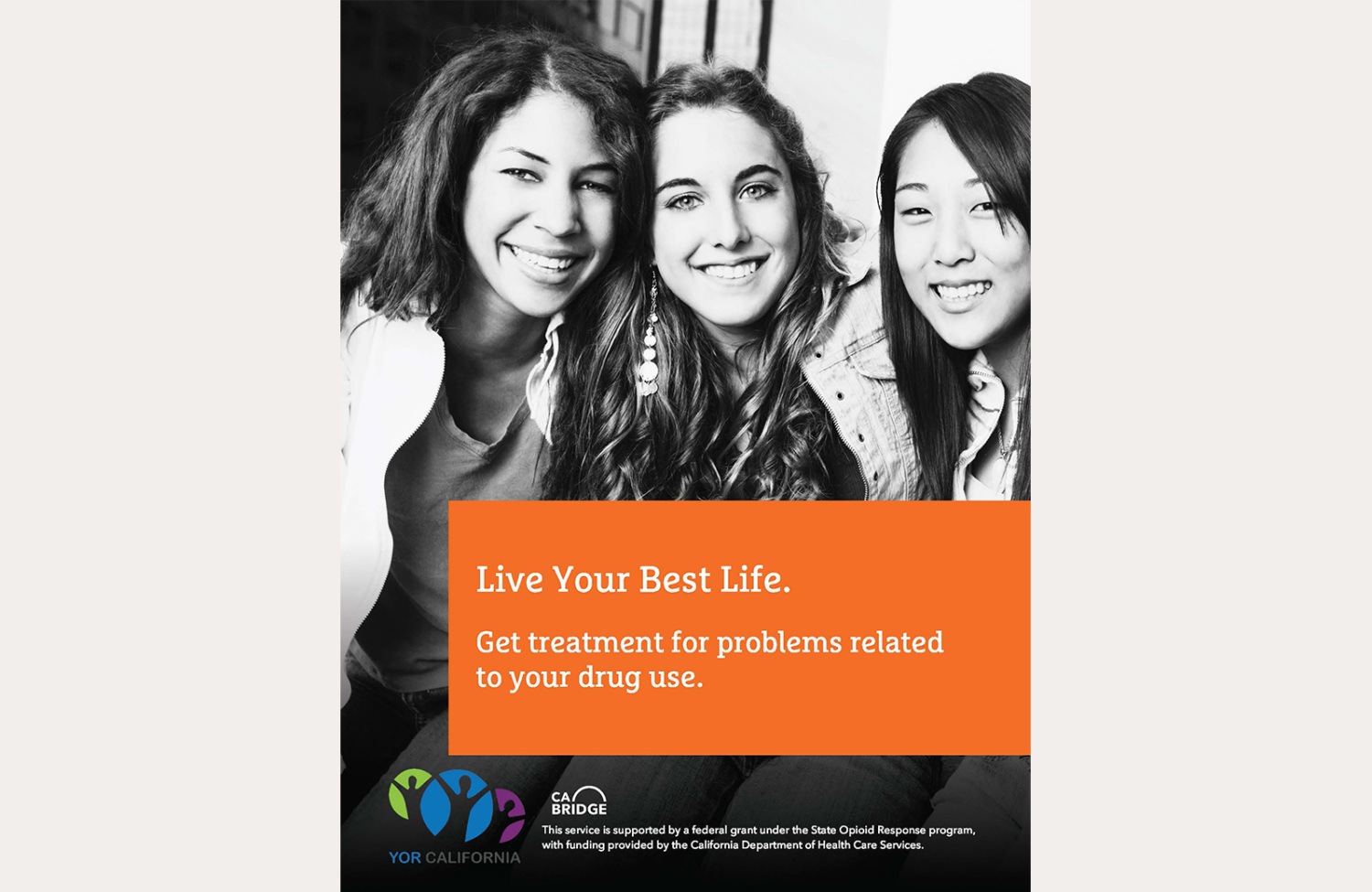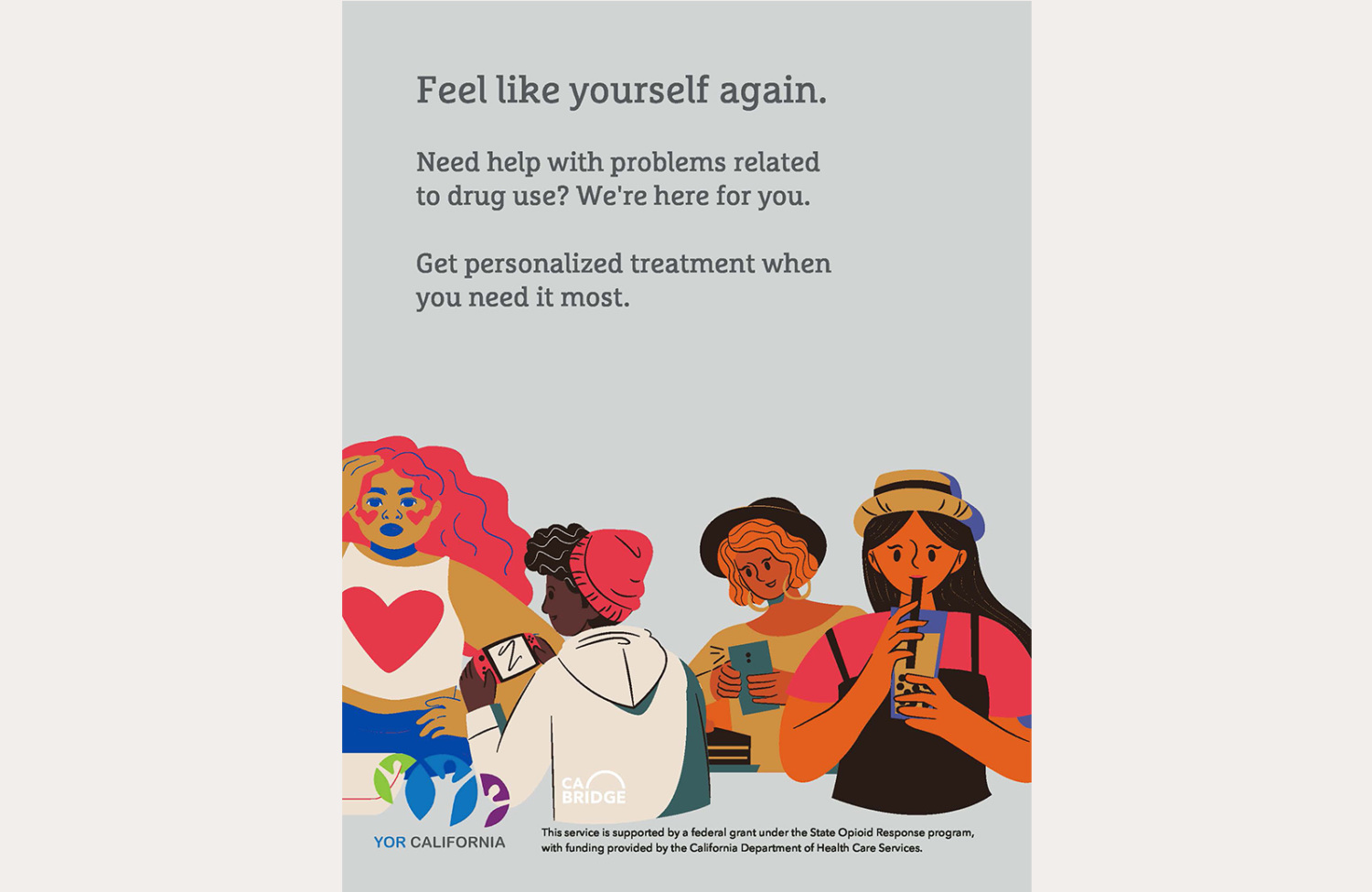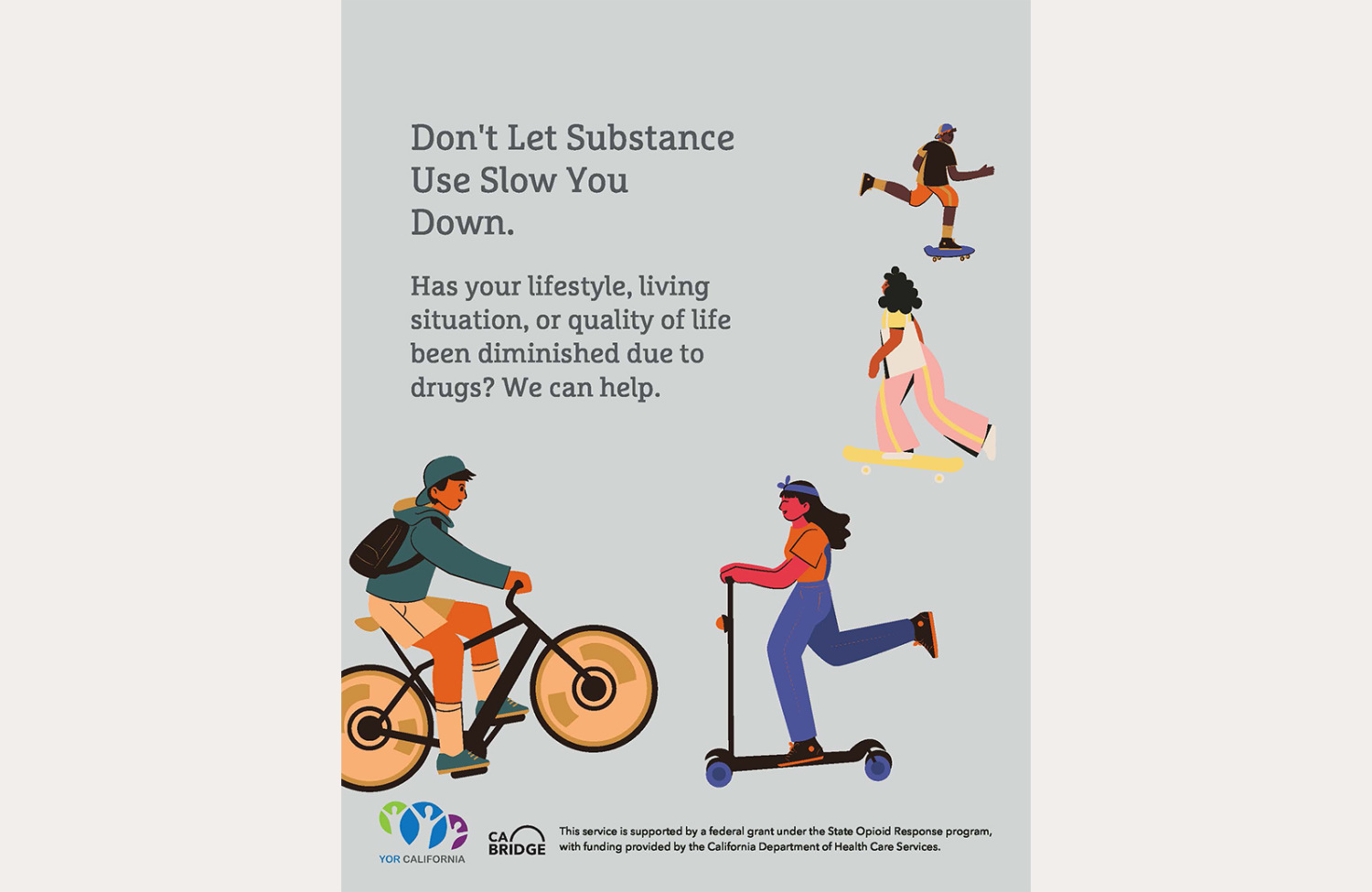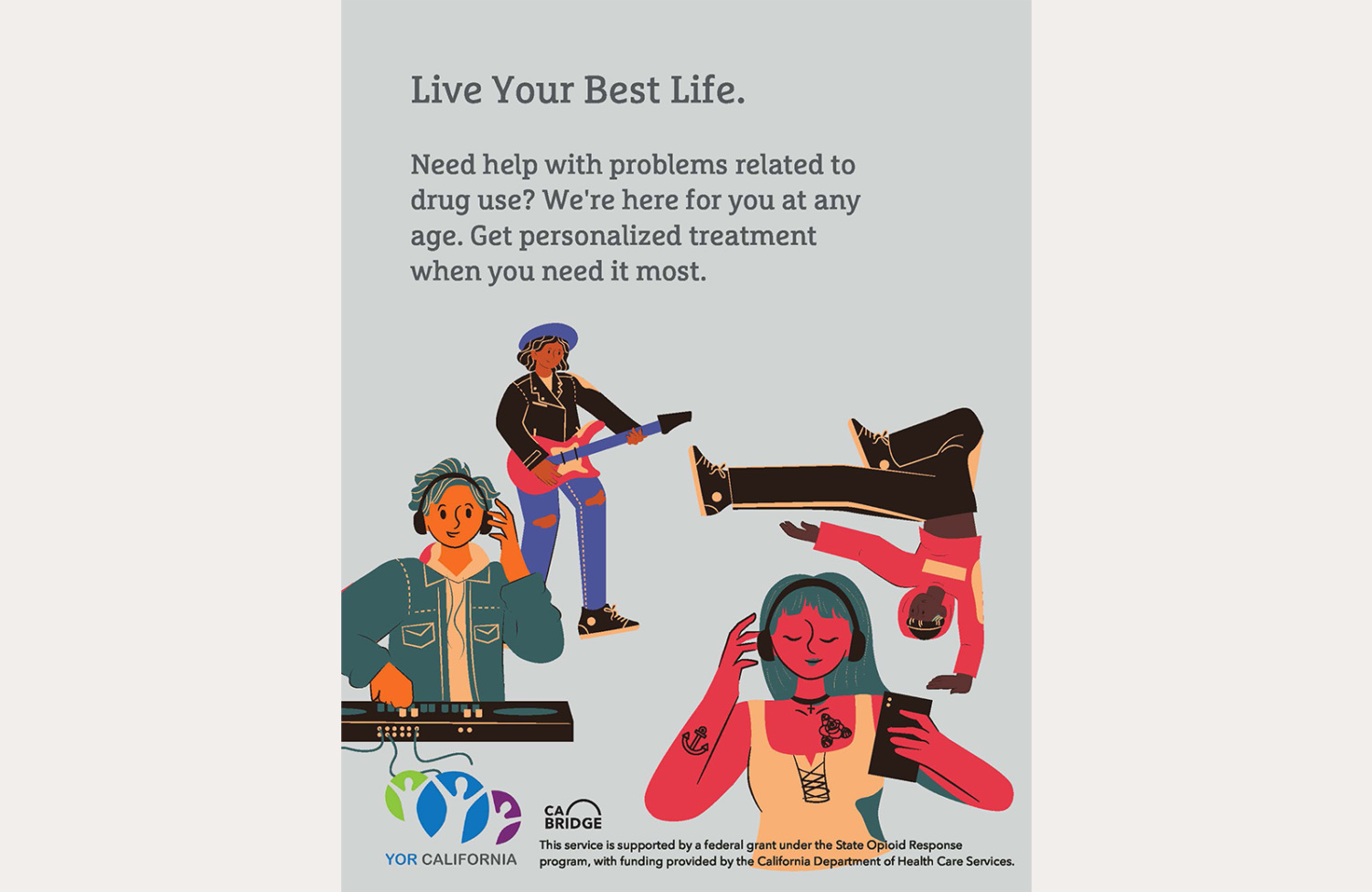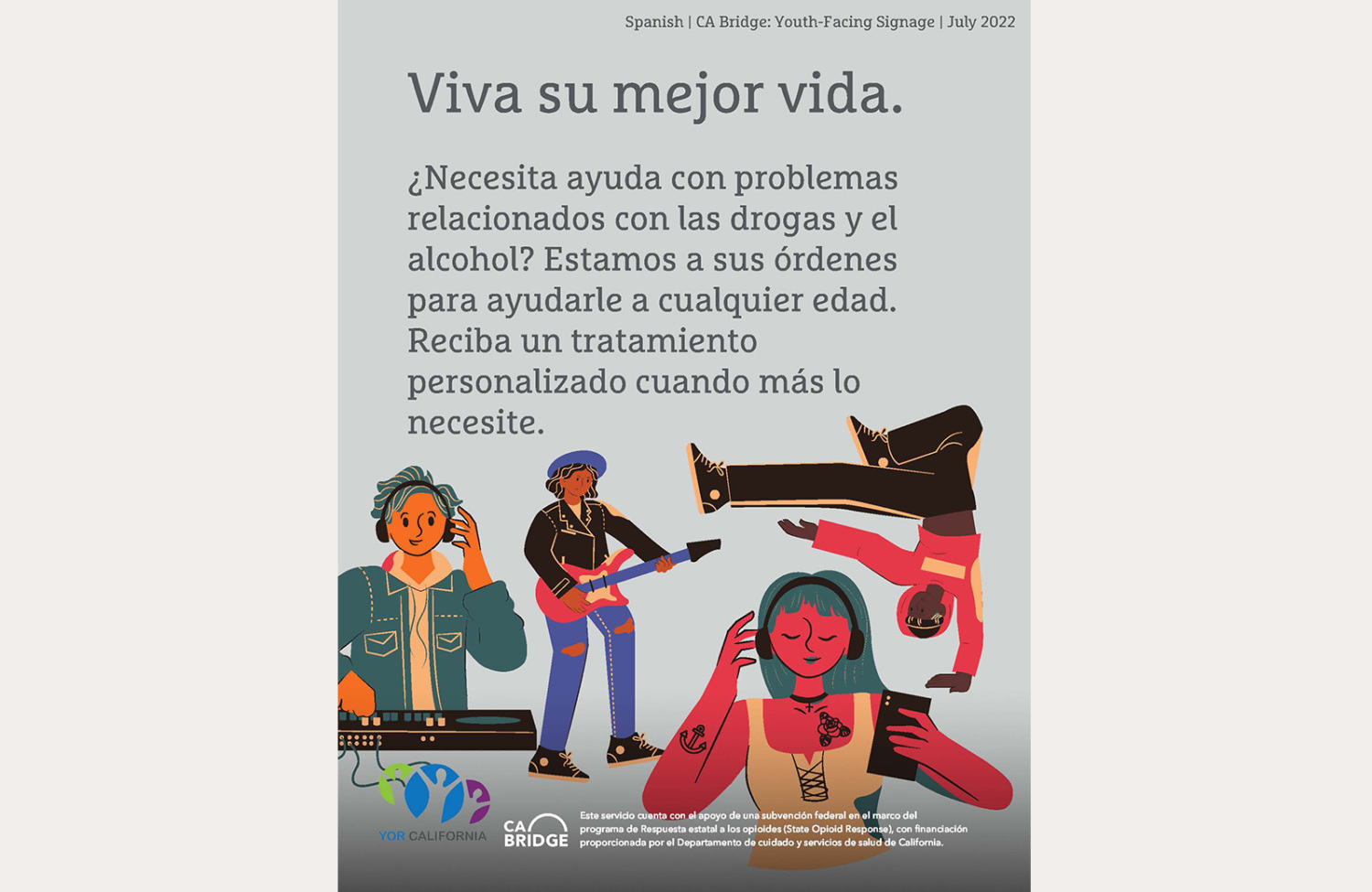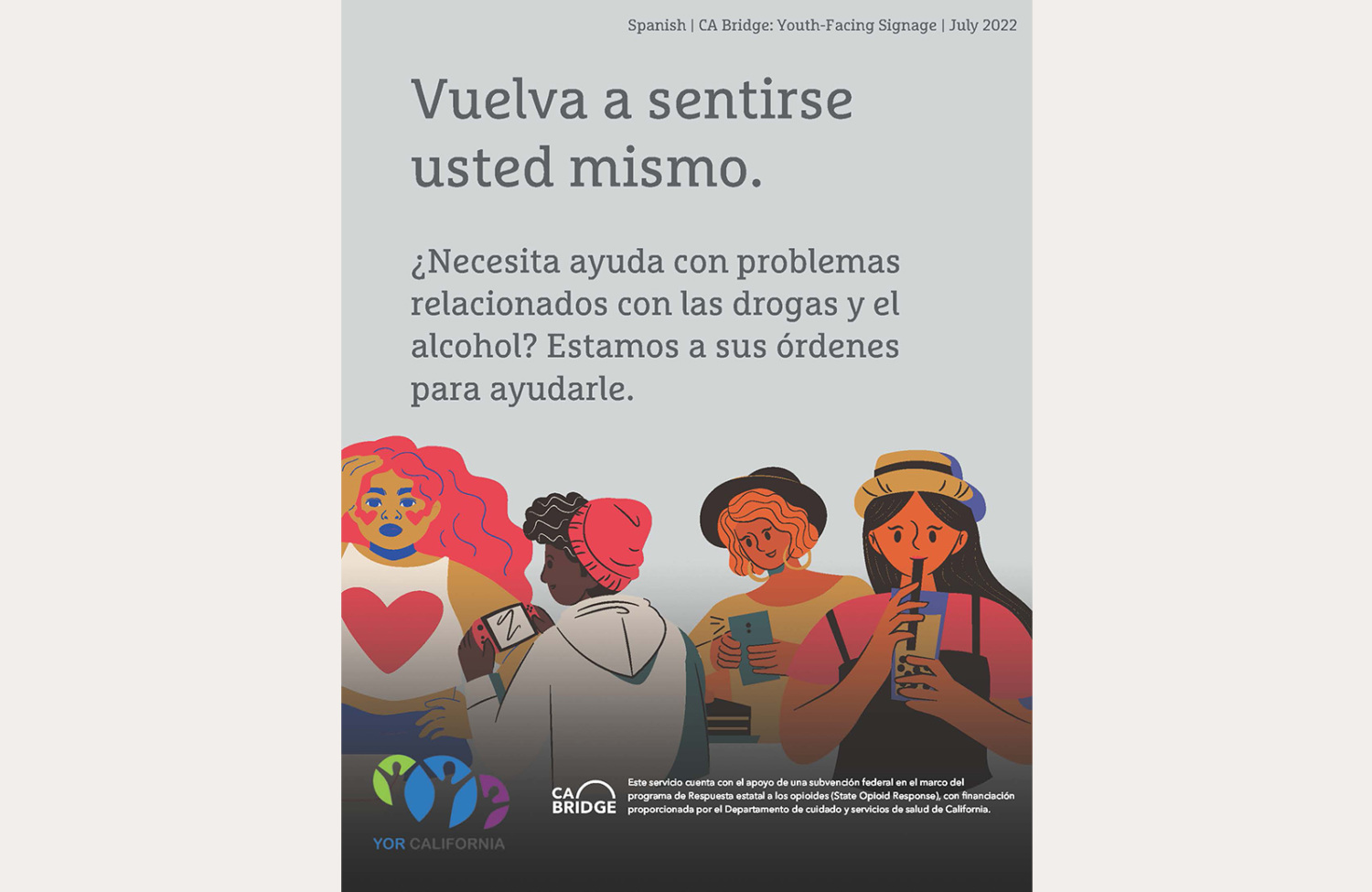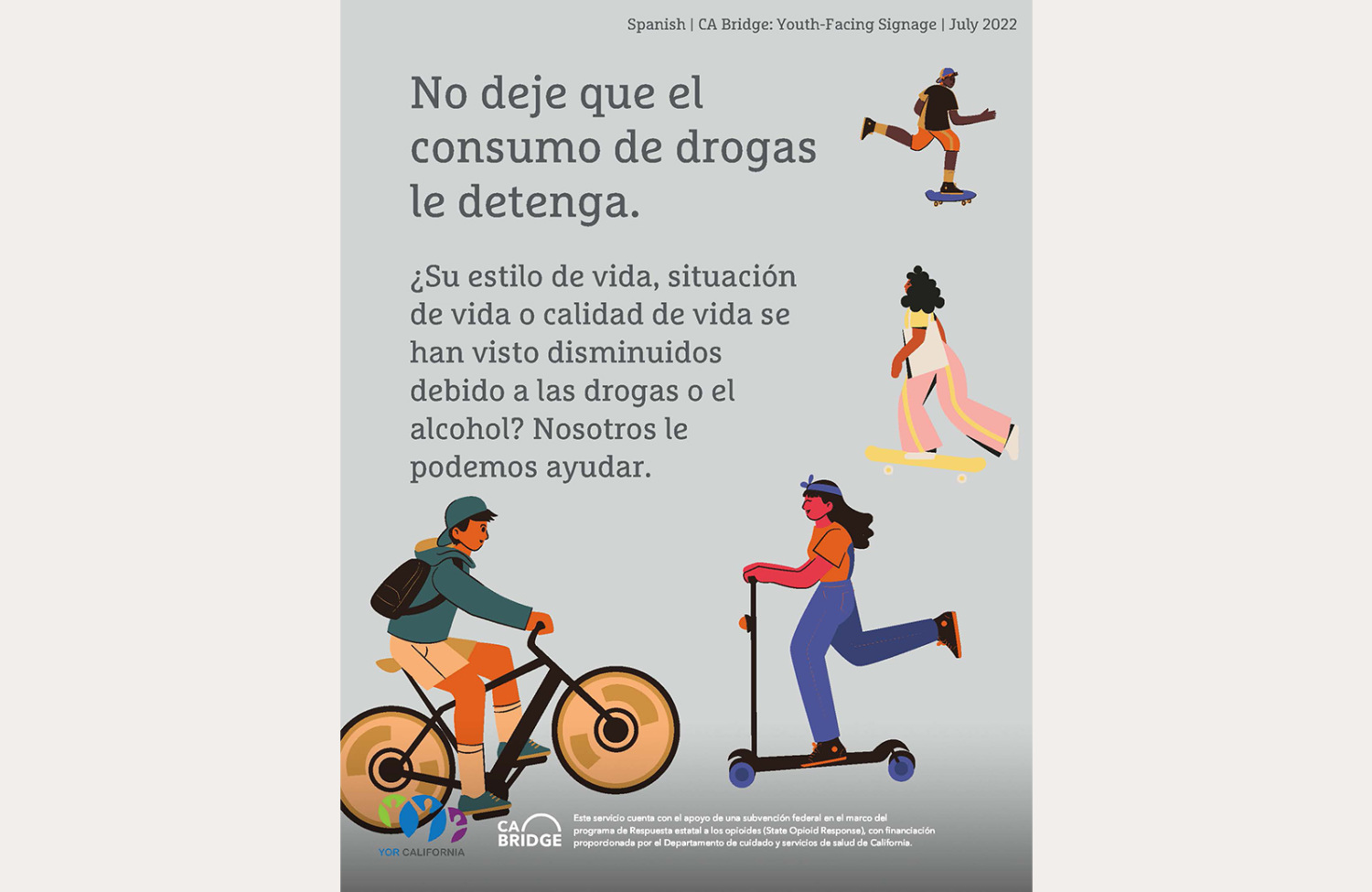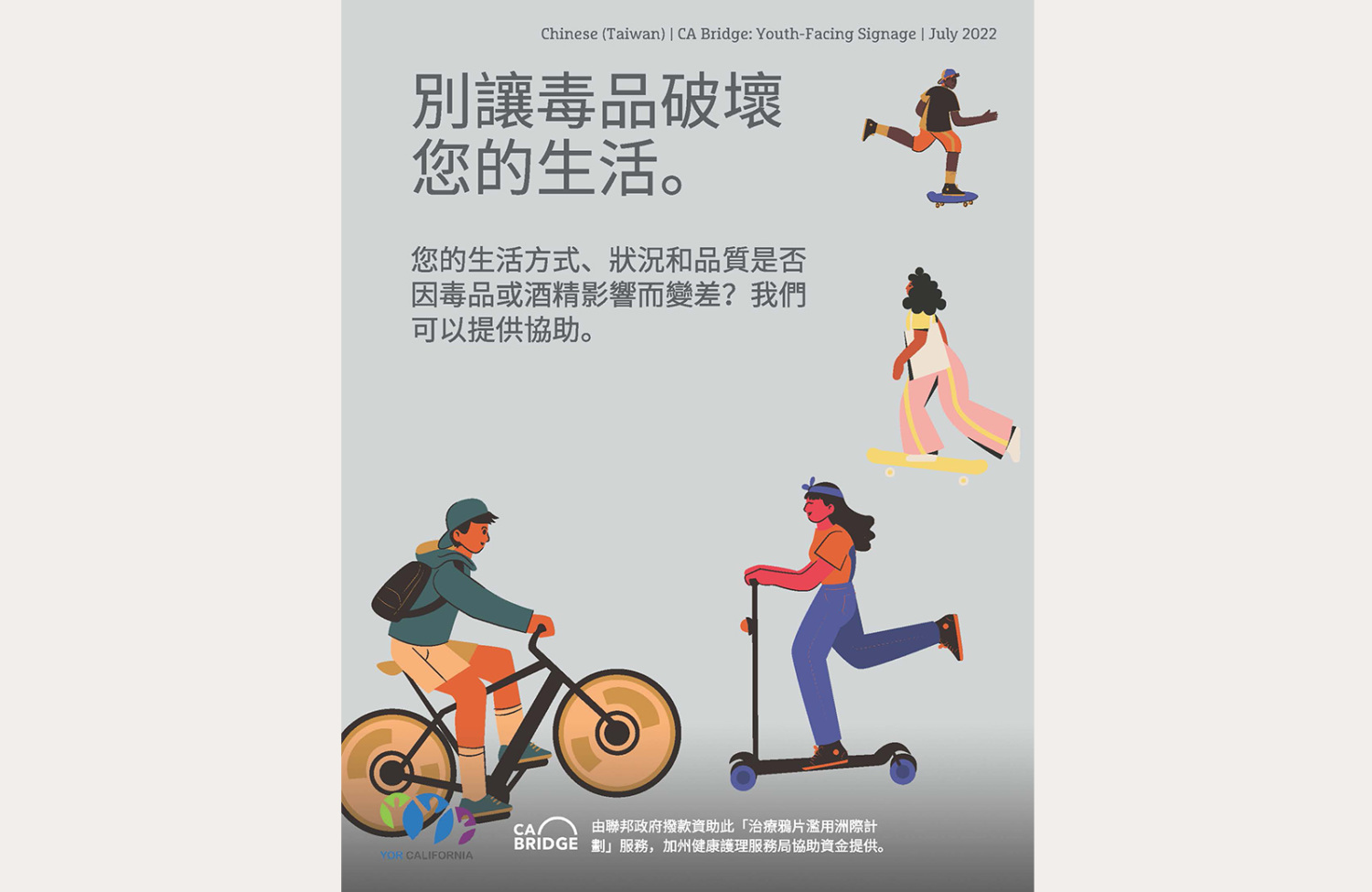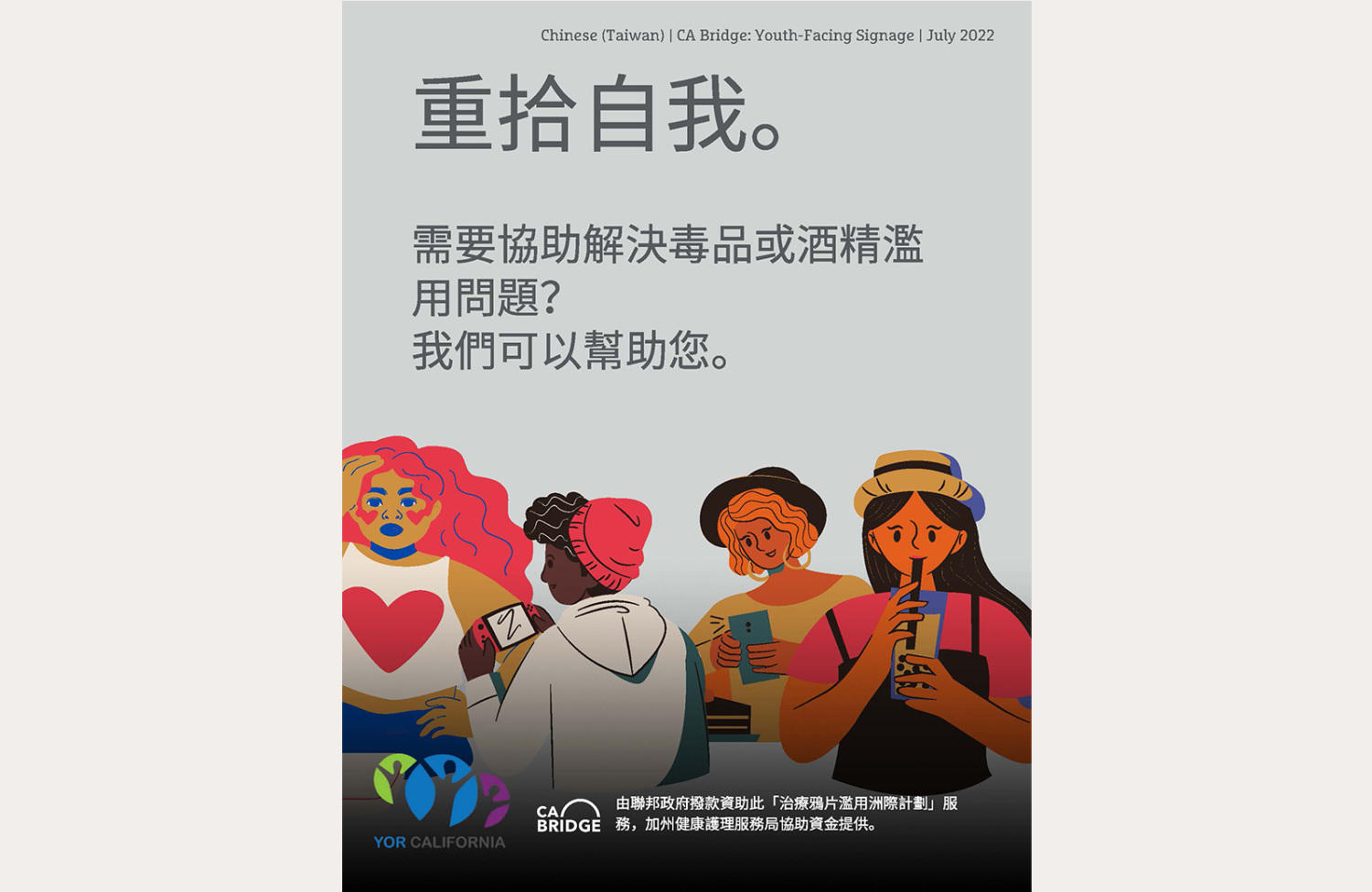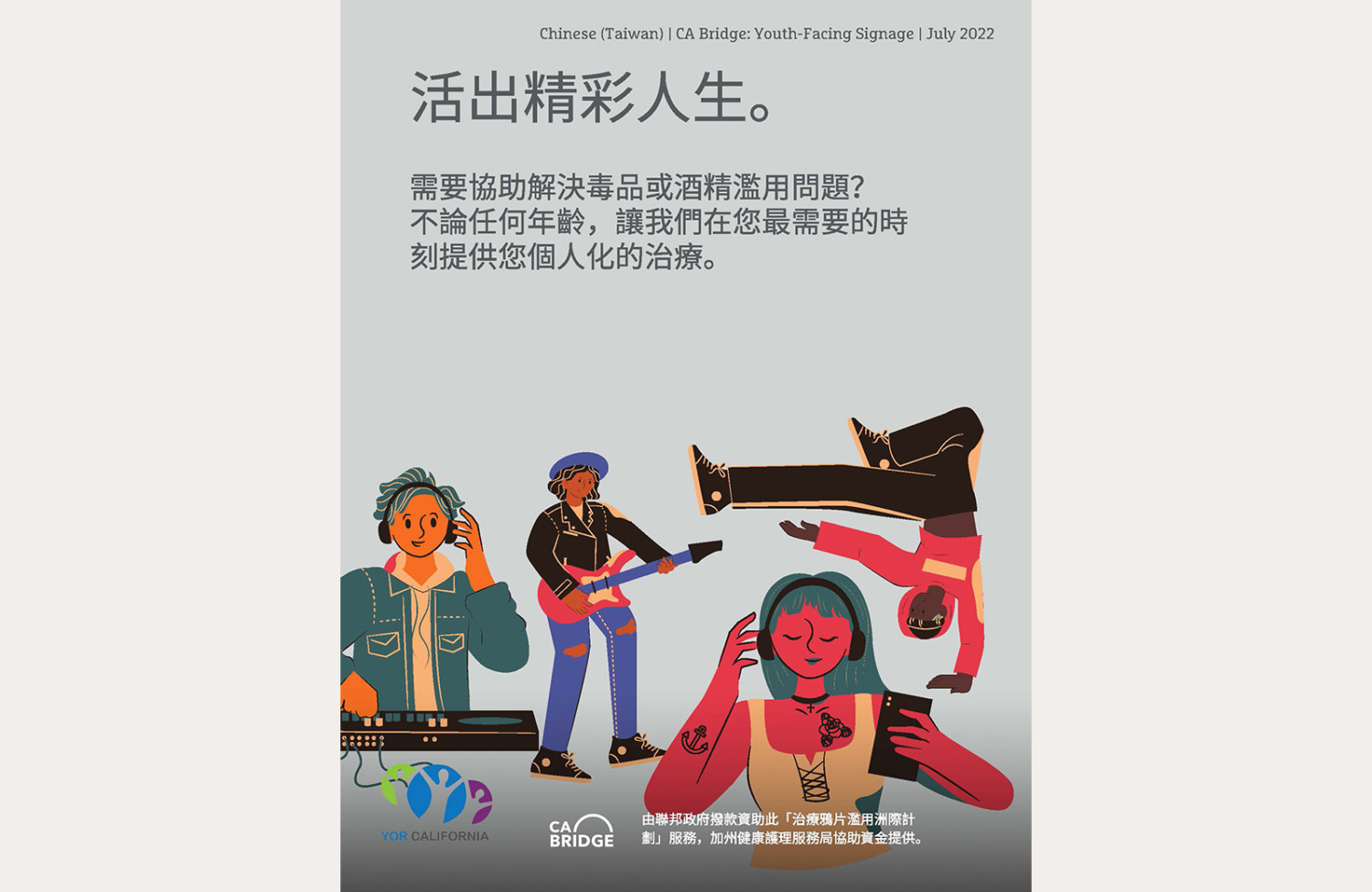Highlights

Opioid use and overdoses are increasing among young people, yet few are accessing treatment after being hospitalized. PHI’s CA Bridge Youth Medication Assisted Treatment (MAT) pilot project found how hospital emergency departments can help to reverse these trends.
21.7K+ youth screened for substance use disorder
28% of youth were >17 yrs.
1.1K + youth referred to patient navigator services
168 youth received buprenorphine
1.9K+ youth reached through MAT trainings
-
Focus Areas
Alcohol, Tobacco, Drugs & Mental Health, Women, Youth & Children -
Issues
School-based Efforts -
Expertise
Leadership Development -
Strategic Initiatives
Opioids
Opioid overdose and hospitalization rates are growing fast among teenagers and young adults, yet young people have some of the lowest rates of substance use treatment. Public Health Institute’s CA Bridge Medication Assisted Treatment pilot program demonstrated how emergency departments can help reverse these trends and provide a critical lifeline to youth facing addiction, by centering youth in their design and outreach.
Expanding Screenings and Access to Health Services
Over the course of the CA Bridge Youth Medication Assisted Treatment pilot project (from 2020 – 2022), four participating hospital emergency departments in the cities of Irvine, Monterey, Palm Desert and Sacramento screened a total 26,516 youth for substance use disorder. Out of the 26,516 youth who were screened, 1,186 were referred for navigation services, where they were connected to a navigator who specialized in substance use and who could refer them to substance use treatment.
Youth were screened in hospital emergency departments, as well as at federally qualified health centers (FQHCs), county clinics, check-up appointments, and juvenile detention centers. 245 youth were evaluated for medication assisted treatment and 188 youth received buprenorphine.
Over the course of the project, CA Bridge established a youth advisory council and worked with youth partners to conduct hospital needs assessments and develop new protocols and procedures for healthcare providers to screen youth patients and connect them with substance use navigators to support long-term care and recovery.
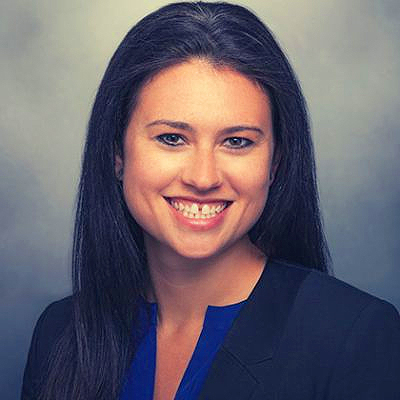
There are unique challenges faced by young people who use drugs. CA Bridge is very proud of both the number of patients reached in this effort and the providers who worked to normalize screening youth for substance use disorder.Elizabeth Keating
Clinical Director, PHI’s CA Bridge
A Closer Look at the Population Served
Analyzing the race and gender breakdown of patients helped the initiative target populations most in need of support. Over half of the patients reached were male, which was much higher earlier in the project and improved after intentional efforts to reach female patients. 47 percent of patients reached were Latinx, and this percentage may have been reflective of the demographic makeup of the pilot hospitals’ target communities and the project’s focus on outreach to youth in Spanish. Twenty-eight percent of the youth served in the MAT pilot project were under the age of 17, and the remaining were ages 18 to 24.
Improvements in Knowledge, Attitudes and Skills of Participants
Findings from the pilot study revealed that hospital emergency departments play a critical role in helping to reverse opioid use and overdoses among youth. Youth-focused outreach and education for substance use disorder treatment were critical in better serving this vulnerable population.
CA Bridge produced outreach materials for youth and healthcare providers, focusing on best practices in clinical and patient education. “Caring for Youth with Substance Use Disorders,” was a resource that helped physicians tailor care specifically for youth with substance use, and answered questions such as, “Who can consent to treatment for minor patients?” The resource has been gaining positive attention and was accessed online 456 times by 336 unique users from June 2021 – August 2022.
The MAT pilot project helped to bridge the gaps that exist in accessing substance use services for youth battling with substance use disorder. Findings from the study have helped to inform ways to outreach and care for youth with substance use disorders.
CA Bridge Outreach Materials for Youth and Healthcare Providers

A mother called me two weeks ago regarding her daughter. I thought it was weird that the mother was calling me until she said her daughter was 17 years old and using 10 fentanyl pills daily. She was seen the previous week at a hospital in Riverside where she was given a two-week supply of buprenorphine. The daughter and her mother were able to access treatment and get an admission date of June 9th for an inpatient bed placement. They were worried because the daughter would run out of her suboxone by the 6th of June and the admission coordinator at her inpatient center asked her to come in with a month supply of suboxone so they can taper her down slowly, but of course they couldn't find a provider willing to prescribe a month supply to a minor. I scheduled them to come in yesterday, June 6th and Dr. Javier and I navigated this case together, spoke with both the mother and daughter, and were able to get her a month's supply of buprenorphine to bring to her treatment. It was a little tricky since she is a minor and we haven't encountered that scenario yet and I'm sure we will continue to see minors with fentanyl abuse. We did it swiftly and proficiently.Elizabeth Keating
Clinical Director, PHI’s CA Bridge
Visit the CA Bridge site for more information.
Work With Us
You change the world. We do the rest. Explore fiscal sponsorship at PHI.
Support Us
Together, we can accelerate our response to public health’s most critical issues.
Find Employment
Begin your career at the Public Health Institute.
